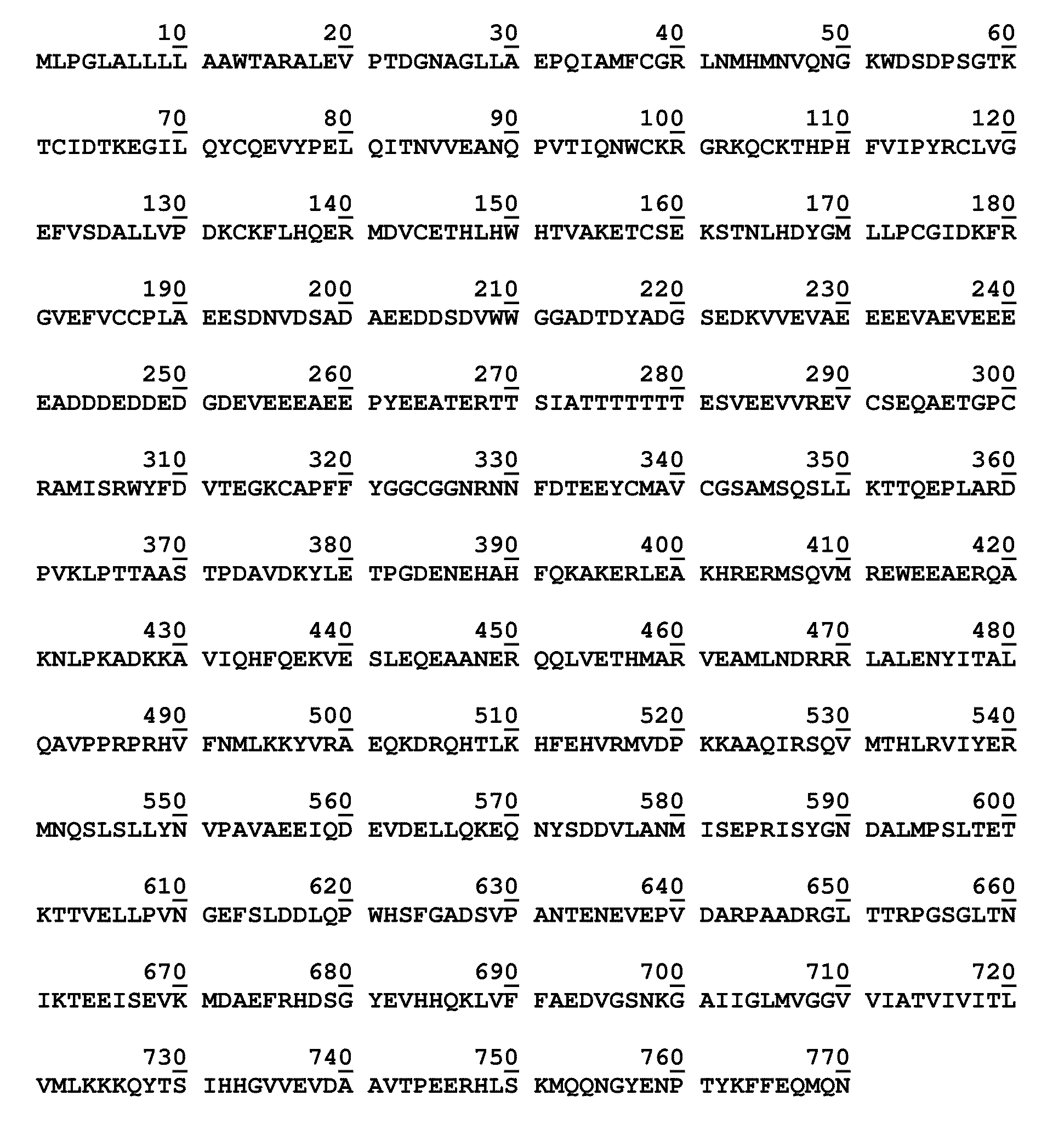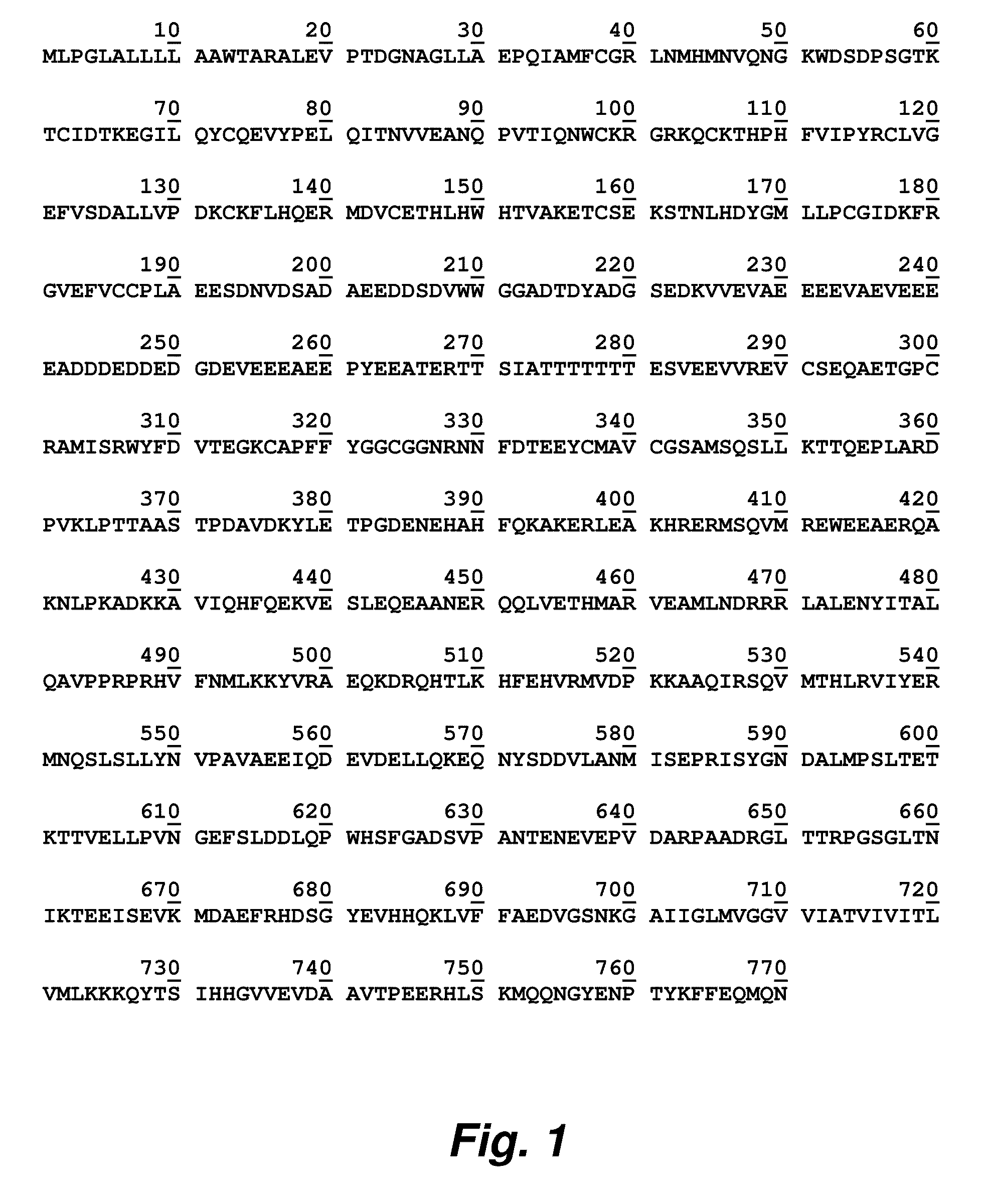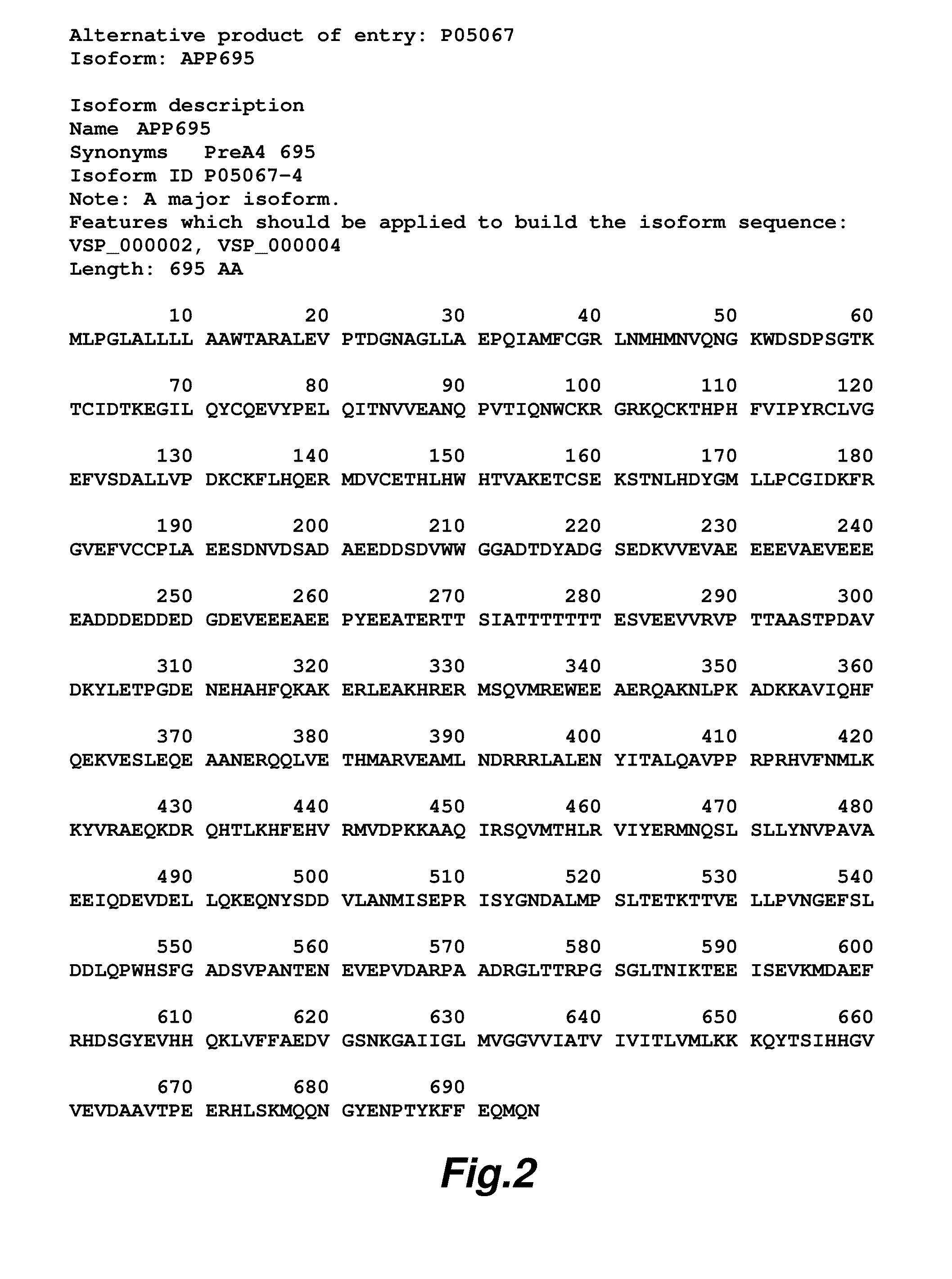eAPP AND DERIVATIVES FOR TREATMENT OF ALZHEIMER'S DISEASE
- Summary
- Abstract
- Description
- Claims
- Application Information
AI Technical Summary
Benefits of technology
Problems solved by technology
Method used
Image
Examples
example 1
eAPP and Derivatives for Treatment of Alzheimer's Disease
[0095]Alzheimer's disease (AD) has been viewed largely as a disease of toxicity, mediated by the collection of a small peptide (the Aβ peptide) that damages brain cells by physical and chemical properties, such as the binding of damaging metals, reactive oxygen species production, and direct damage to cell membranes. While such effects of Aβ have been clearly demonstrated, they do not offer a physiological role for the peptide.
[0096]Our recent results indicate that Aβ has physiological signaling properties (e.g., via interaction with APP itself, the insulin-receptor, and other receptors), and our results suggest that AD may result from an imbalance between two normal processes: memory formation and normal forgetting. Our results show that APP has all of the characteristics of a dependence-receptor, i.e., a receptor that mediates cell-death in the presence of an anti-trophin (in this case, Aβ) but supports cell survival in the ...
example 2
Amyloid Precursor Protein (APP)-Mediated Signal Transduction: 3D Structural Studies Toward Development Of Novel Therapeutic Agents For Alzheimer's Disease
[0100]Alzheimer's disease (AD) has been viewed largely as a disease of toxicity, mediated by the collection of a small peptide (the Aβ peptide) that damages brain cells by physical and chemical properties, such as the binding of damaging metals, reactive oxygen species production, and direct damage to cell membranes. While such effects of Aβ have been clearly demonstrated, they do not offer a physiological role for the peptide. Recent results from several different laboratories suggest Aβ has physiological signaling properties (e.g., via interaction with APP itself, the insulin-receptor, and other receptors) (Lu et al. (2003) Ann. Neurol., 54: 781-789; Ling et al. (2002) J. Neurosci., 22: 1-5; Kuner et al. (1998) J Neurosci Res, 54: 798-804), and our results suggest that AD may result from an imbalance between two normal processes:...
example 3
Structural Basis for Aβ Binding to App: Modulation of Processing, Signaling and Induction of Cell Death
[0123]It has been previously shown in our laboratory using cell culture models that Aβ can complex with its precursor protein APP on the cell surface and induce cell death (Shaked et al. (2006) FASEB J, 20: 1254-1256). In the presence of a single point mutation of APP695 at the Asp664 site the induction of cell death by Aβ is completely inhibited (Saganich et al. (2006) Neurosci, 26: 13428-13436; Lu et al. (2003) Ann Neurol, 54: 781-789; Lu et al. (2003) J Neurochem, 87: 733-741). Our data suggest that this interaction is similar to a ligand-receptor interaction resulting in a signal transduction event involving the intracellular cleavage of APP at the Asp-664 site, this cleavage results in the activation of a cascade of biochemical pathways resulting in cell death. In order to elucidate the structural basis for this interaction we have prepared and isolated the extracellular domai...
PUM
| Property | Measurement | Unit |
|---|---|---|
| Time | aaaaa | aaaaa |
| Time | aaaaa | aaaaa |
| Length | aaaaa | aaaaa |
Abstract
Description
Claims
Application Information
 Login to View More
Login to View More - R&D
- Intellectual Property
- Life Sciences
- Materials
- Tech Scout
- Unparalleled Data Quality
- Higher Quality Content
- 60% Fewer Hallucinations
Browse by: Latest US Patents, China's latest patents, Technical Efficacy Thesaurus, Application Domain, Technology Topic, Popular Technical Reports.
© 2025 PatSnap. All rights reserved.Legal|Privacy policy|Modern Slavery Act Transparency Statement|Sitemap|About US| Contact US: help@patsnap.com



